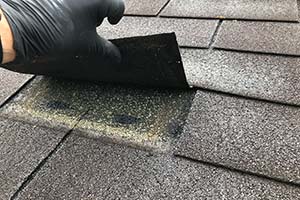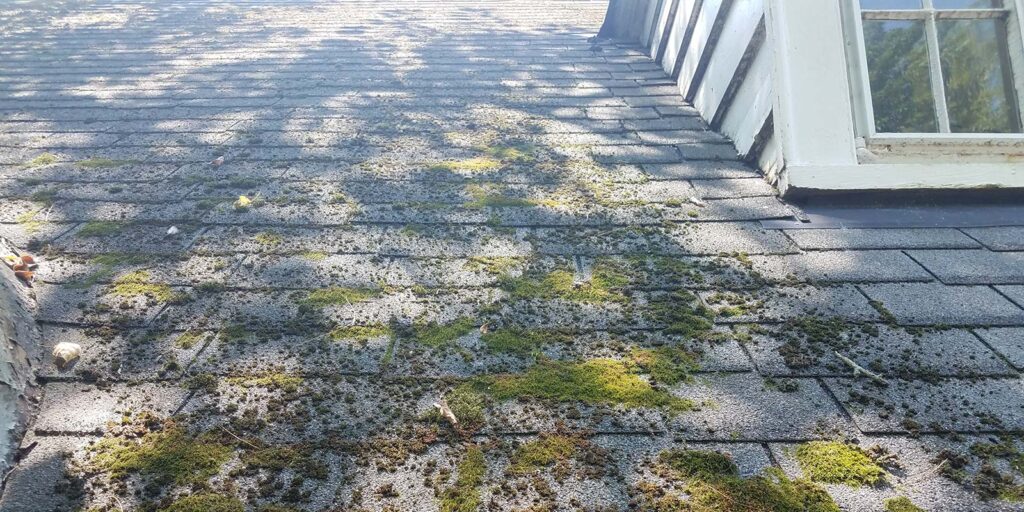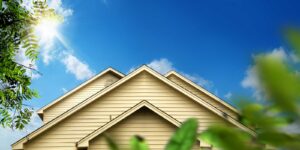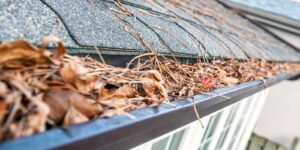Sometimes we see moss grow slowly on the roof, but other times black streaks appear to happen almost overnight. This fast growth is especially true in the warmer months or on homes located in humid climates such as the shore. This unsightly growth isn’t just an eyesore; it can be detrimental to your roof’s functionality and can make your roof fail faster, meaning you’ll need a replacement before the natural lifespan of your shingles is up. So, what exactly is this growth, and how can you avoid it?
Moss

Moss growth is the easiest to identify as you’ve likely seen it growing on rocks in the woods. Moss usually starts as a thin layer, then grows, pushing shingles apart and creating space for water to get through and create all sorts of issues. But the good news is, moss is pretty easy to remove. You can simply spray the area with a garden hose and brush off the moss. If that doesn’t work, you can also apply a specially formulated cleaning solution. However, if you’re uncomfortable getting up on the roof, there are plenty of home exterior cleaning companies that can help you out. Either way, you should take steps to remove the moss as soon as possible to avoid damage to your shingles. To prevent further mold growth, it’s a good idea to keep overhanging tree branches trimmed.
Algae

Usually harder for homeowners to identify, algae growth often appears as black or dark streaks on the roof. Much of the time, it looks like after a rainstorm when parts of your roof are drying faster than others. Much of the time, algae growth is simply an eyesore and won’t cause direct damage to your roof. However, it does invite other issues when combined with fungus to create lichen. You should nip this issue in the bud by using a cleaning solution in the same manner outlined above.
Lichen

When an alga is given free rein on the roof, it can often combine with fungus to create lichen, a type of fungus with roots that wrap around the granules in your shingles, feeding on the algae and components in your shingles. Lichen is not as easy to remove as moss or algae. And it is very hearty. Because the roots are so engrained with the shingles, washing will only do more damage to your roof. In most cases, you will need to repair sections or even replace your entire roof once the lichen takes form.
The lesson to be learned here is that proactive maintenance will help keep your roof safe from destructive moss and lichen. If you see any of the issues above, especially if your roof is over 20 years old, it’s time to talk to a roof repair and replacement specialist.




